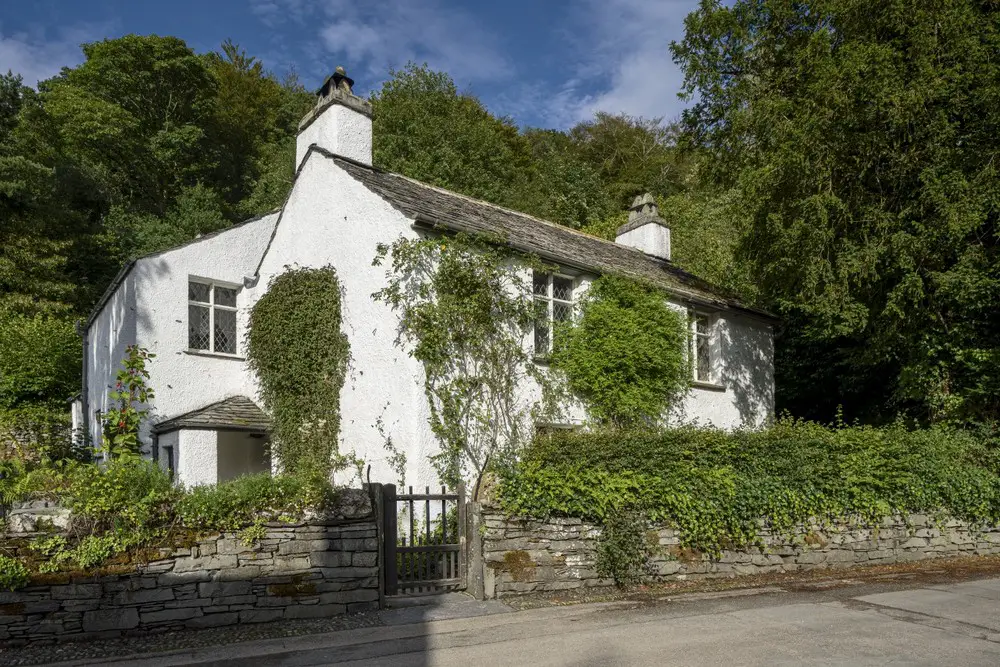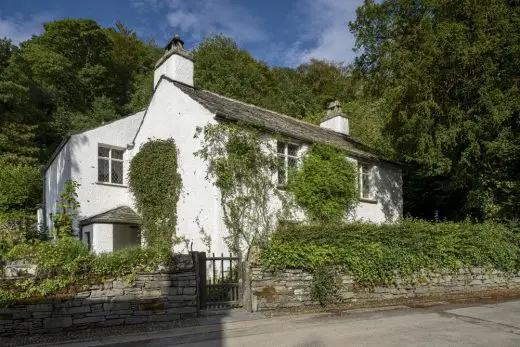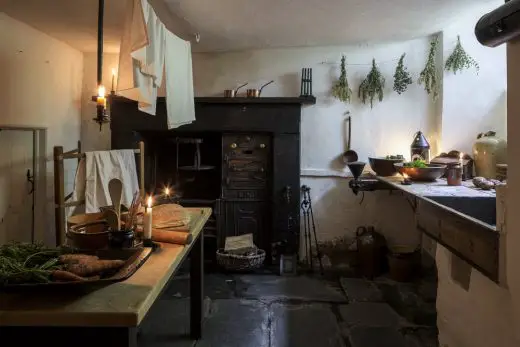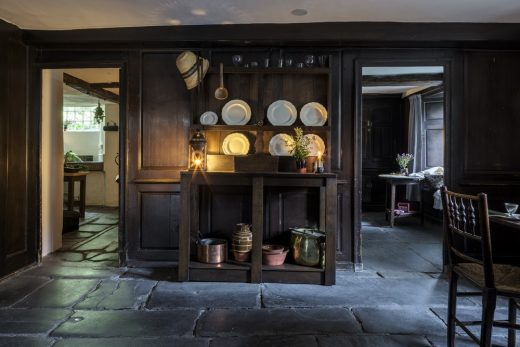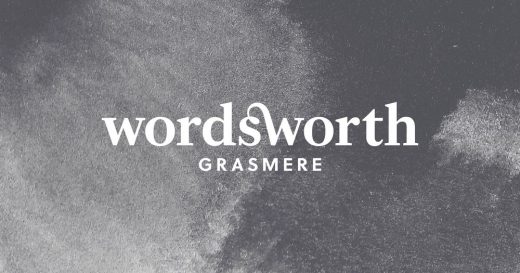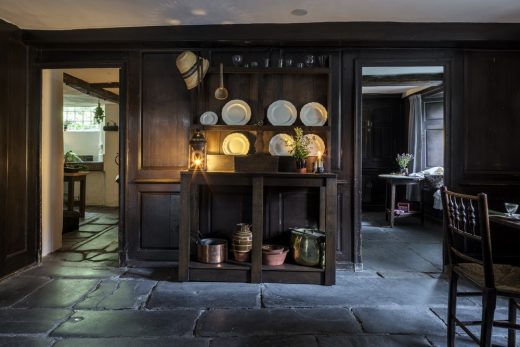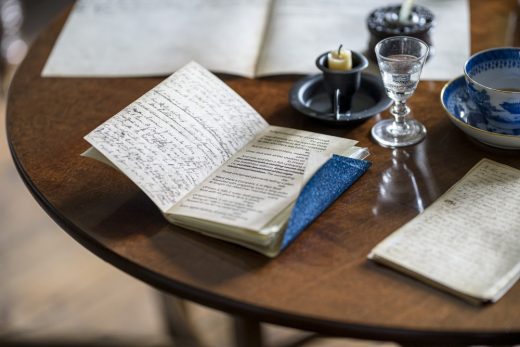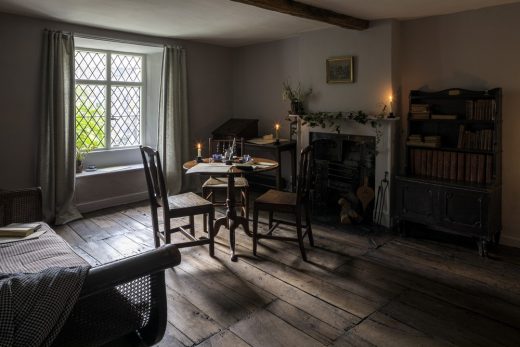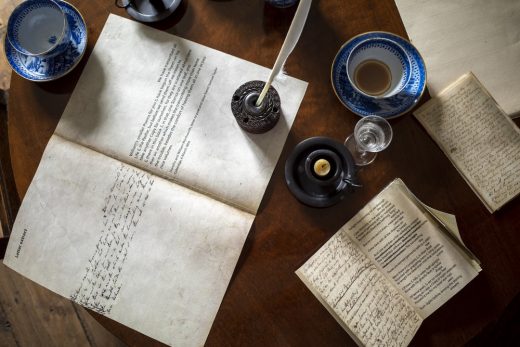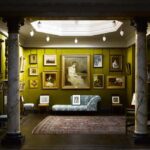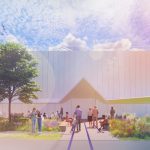Dove Cottage Lake District building, Museum at Wordsworth Grasmere Architecture, Photos, Architects
Dove Cottage & Museum at Wordsworth Grasmere
14 Sep 2020
Dove Cottage, Wordsworth’s former Lake District home
Exhibition, interpretation & wayfinding: Nissen Richards Studio ; Basebuild architect: Purcell
Nissen Richards Studio creates new interpretation for Dove Cottage and the Museum at Wordsworth Grasmere,
together with branding, wayfinding, graphic and exhibition design
Dove Cottage, exterior view from garden:
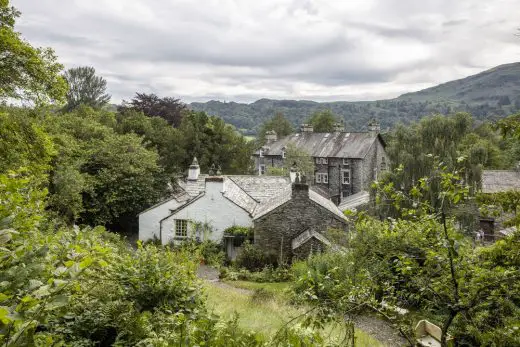
Photos by Gareth Gardner
As part of Reimagining Wordsworth, the 2020 celebrations of the 250th anniversary of the birth of the great English Romantic poet, William Wordsworth, Wordsworth Grasmere has unveiled the first phase of a re-imagined visitor journey at Dove Cottage, Wordsworth’s former Lake District home. The newly-expanded Museum on the site, showcasing many of Wordsworth’s original manuscripts, will open in spring 2021 in a second phase of the project. Exhibition design and interpretative overview throughout is by Nissen Richards Studio whilst, in a separate commission, Nissen Richards Studio has also created a new Wordsworth Grasmere identity, encompassing all aspects of the site under the aegis of its governing charitable body, The Wordsworth Trust.
‘Reimagining Wordsworth is a celebration of people, poetry and place, of great literature, created by remarkable people in an inspirational landscape. By reimagining who we are, what we do and what we offer, we are bringing Wordsworth’s story into the 21st century and reaching out to a broader audience. Our new name – Wordsworth Grasmere – reflects this transformation, and the fundamental importance of our location’, Michael McGregor, Director of The Wordsworth Trust commented.
Viewing the film in the stables:
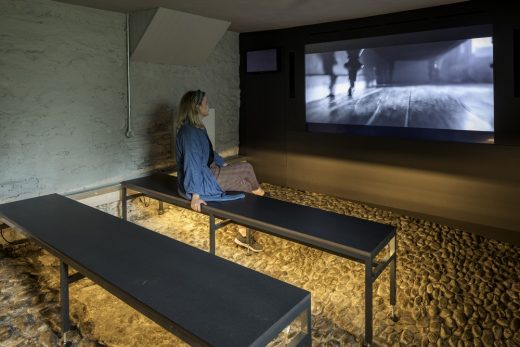
The Wordsworth Trust and Dove Cottage
The Wordsworth Trust was originally set up in the late 19th century, when Dove Cottage, William Wordsworth’s home from 1799 -1808, came up for sale. The cottage has always been associated with Wordsworth, as the place he wrote his most famous poems. The poet also lived in several other Cumbrian locations, including Cockermouth, where he was born in 1770; Allan Bank near Grasmere, where he moved directly after Dove Cottage and Rydal Mount near Ambleside, where Wordsworth lived from 1813 up until his death in 1850 at the age 80.
The Scope of Works
When Dove Cottage was originally purchased, the on-site museum was located within a single room of the cottage. More land and buildings were subsequently acquired and the site now encompasses Dove Cottage, the Museum and the Jerwood Centre, created at the turn of the millennium and housing a world-class collection of Wordsworth manuscripts – as well as a number of supporting buildings, gardens and a car park.
The Museum, located in a former coach house, will re-open in phase two of the project. Nissen Richards Studio has created the interpretative approach that has shaped the site and the exhibition design throughout. The overall brief to Nissen Richards Studio was to create Wordsworth Grasmere’s new exhibition design and interpretation, wayfinding and signage, including some elements of interior design, as well as branding, graphics and the art-direction of most of the project’s AV elements, including films by renowned documentary-maker Nick Street and sound designs by specialist sound designer Carolyn Downing.
The new wayfinding system devised by Nissen Richards Studio for the site uses panels of local slate, with slate-clad metal frames for larger, freestanding pieces. The wayfinding wording is an etched and ink-filled graphic in a Soleil Regular typeface, accompanied where necessary by images from a grid of consistent and easily-comprehensible pictograms. These will allow instant interpretation by the hugely-international range of visitors Wordsworth Grasmere attracts, with the pictograms indicating, for example, visiting times, walking distances, closed areas and rain- and sunshine-friendly paths.
The Refurbishment of Dove Cottage
A number of changes had been made to Dove Cottage since Wordsworth’s time, incorporating both furniture from later in his life and a number of fitted fixtures from a later period. Part of the new project’s scope was to strip back any furniture that felt out of place in order to create a more honest treatment for the Grade-I-listed cottage.
‘Our approach to the design’, Nissen Richards Studio Director Pippa Nissen explained, ‘was not to replicate the original state, but to intimate and evoke its past history. New furniture, commissioned from local craftsmen with specialist historic knowledge, has been built in the style of the period and now sits alongside real, surviving furniture. An object-based treatment – including a wonderful resource from the period in the form of Dorothy Wordsworth’s Grasmere journal – has been combined with film and sound design commissions to suggest a lived-in and humble home, where extraordinary writing took place.’
Nissen Richards Studio’s interpretational approach was to create a film that visitors see first, in which the cottage is full of life, working with film-maker Nick Street. This kicks off the visitor journey in the old stables, just before entry to the cottage, and sets the stage. The film ensures that visitors’ minds are full of images already as they explore the cottage further and the film also influenced the approach to the refurbishment of the cottage, which represents moments from another time, but has also been designed in fragments to allow the visitors’ imagination to fill the gaps. As visitors move to the upstairs rooms, this changes further to allow for more discussion before they transition out into the garden.
William and Mary Wordsworth’s bedroom
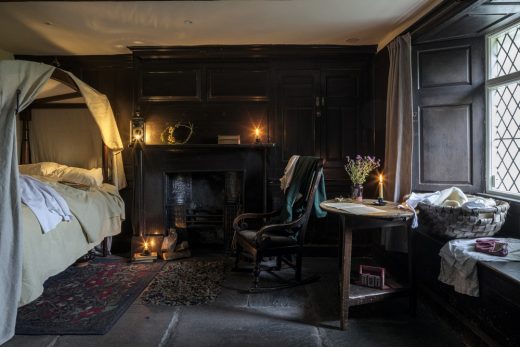
The ground floor of the cottage is made up of three main rooms – the downstairs lodging room, back kitchen and the main kitchen, a busy and domestic family space, where, increasingly, thinking and writing happened as time went on, although Wordsworth wrote in the majority of rooms in the house at some stage. The back kitchen and pantry are filled with cooking jars and the kind of foods that would have been used at the time.
‘The concept is for visitors to explore the cottage using all their senses’, Elin Simonsson, Head of Interpretation at Nissen Richards Studio explained, ‘effectively becoming ‘Wordsworthian’ as they pass through the space, walking where William and Dorothy walked, sitting where they sat, ascending the same staircase, seeing through the same windows. The house doesn’t feel like a polished historic house setting, but rather a home that is lived in. All around are the traces of human life: a book left open on a table; an open journal; unfolded letters; a chair set at an angle; leftover crumbs on a plate – even dishes next to the sink. We really want visitors to feel a connection with the Wordsworths from the moment they enter Dove Cottage.’
Wordsworth’s former home Downstairs lodging room:
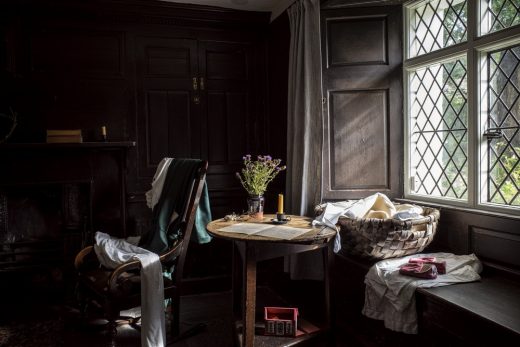
Sound designer Carolyn Downing has created a soundscape for the scheme that reverberates all around the ground floor, breathing life into the home and creating a sense of the real lives lived here. As the visitor proceeds, they hear subtle snatched sounds, as if from the next room or coming in through the window, creating a rich picture of everyday life and including children playing and muffled conversations, utilising a variety of voices and local accents.
‘Carolyn’s beautiful and sophisticated patchwork of sounds has been carefully programmed and balanced so that visitors won’t hear the same thing in the same way twice’, Pippa Nissen commented. ‘The sounds, which also include running water or a floor being brushed, recorded in the cottage, offer further textured fragments and complement the earlier film experience perfectly.’
Wordsworth’s thinking and writing room:
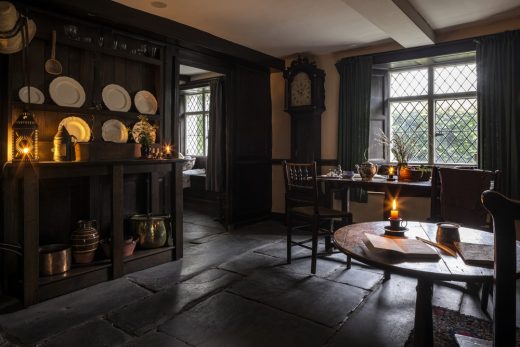
This impressionistic sense of the house and its history is built on further as visitors go upstairs and discover the first objects on display, including a journal belonging William’s beloved sister, diarist, poet and writer Dorothy Wordsworth, in the sitting room, where furniture also includes an original sofa and chair from the Wordsworths’ tenure (either at this or a later home). The various objects were acquired by The Wordsworth Trust with Nissen Richards Studio working on their staging, creating ‘cluster stories’ to serve as conversation points for the Dove Cottage guides. Dorothy’s journal, for example, sits within a writing desk designed by Nissen Richards Studio, which opens to reveal the journal’s showcase.
Wordsworth’s former Lake District home books:
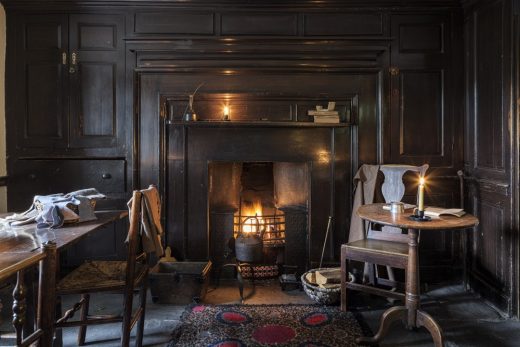
The new Wordsworth Grasmere branding
The new logotype for Wordsworth Grasmere has been designed by Nissen Richards Studio with the purpose of preserving Wordsworth’s heritage and his innovative approach to poetry. The classic and the contemporary are brought together through bespoke characters initially inspired by Baskerville, the typeface designed by John Baskerville and used to print the first Wordsworth editions.
‘Our primary typeface is Soleil, an inclusive sans-serif based on modernist ideas of simplicity, clarity and reduction to essential forms’, Candy Wall, Associate Graphic Designer at Nissen Richards Studio explained. ‘The identity is in a friendly and contemporary lower case, with GRASMERE capitalised in Sans Serif.’
The unique ligature of the logo represents inspiration, connection and poetry and references the handwritten manuscripts and printed editions of the collection. The bespoke ligature is inspired by a set of glyphs taken from the first edition of Wordsworth and Coleridge’s Lyrical Ballads, forming part of an instruction from Wordsworth to his printer. The identity, which was designed to be as inclusive as possible and to appeal to a broad audience, also features a marque that suggests the stain of ink and the echo of handwriting. Bespoke ink shapes enrich the brand and introduce a sense of poetry, with a classic, handmade quality, as if belonging to a Wordsworth manuscript. Each shape has a unique feel and has been created especially for this identity.
The colours of the identity are inspired by the Lake District and paintings by English Romantic masters. The contrast between light and dark colours is a direct reference to the landscapes reflected in the lakes and the atmospheric paintings of Wordsworth’s period.
The tone of voice for the identity system was defined as ‘welcoming, passionate, ambitious and relevant’, whilst expressing the core mission of the site, which is to bring poetry to life, inspire an admiration of nature, evoke the power of human stories and the aspiration to be ‘Wordsworthian’, underlining the great poet’s revolutionary life and attitudes. The branding ties in with the graphic design throughout the Museum galleries, so that the approach to the interpretation and designs is seamlessly integrated.
‘The new brand that Nissen Richards Studio have designed for Wordsworth Grasmere perfectly captures the essence of Wordsworth’s legacy. It is contemporary and inspirational with a timeless feel and will be invaluable in helping us to shape a new identity for our organisation. We couldn’t be happier with it!’ said Emily Burnham, Marketing and Communications Manager at The Wordsworth Trust.
Dove Cottage Lake District – Building Information
Exhibition, interpretation & wayfinding: Nissen Richards Studio
Branding: Nissen Richards Studio
Photographer: Gareth Gardner
Introductory film: Nick Street
Sound designer: Carolyn Downing
Basebuild architect: Purcell
About Nissen Richards Studio
Nissen Richards Studio works with many of the world’s greatest cultural institutions. Comprised of architects, graphic designers, film-makers, animators and interpretation experts, the studio currently has live projects in the UK, Europe and the Far East and won the Best Exhibition Design Award at the Design Week Awards 2019 for its ‘Life in the Dark’ project at the Natural History Museum in London, as well as the Gold and Silver awards in the Pop-Ups, Display, Exhibit & Set Design category of the London Design Awards 2019 for projects for the Wallace Collection and Historic Royal Palaces.
Founded in 2010 by Pippa Nissen and Jim Richards, the studio’s particular combination of skills lies in its respect for all the voices involved in a project; its willingness to experiment, its unique storyboarding process and its particular fusion of architecture and theatre design. Our clear systems of thinking, working and communicating, together with our boundless curiosity about the world, translate into beautifully-designed spaces for people to come to, be stimulated by, enjoy and remember.
Dove Cottage, Wordsworth’s former Lake District home, building information / imagesfrom Nissen Richards Studio
Location: Grasmere, Lake District, Cumbria, north west England, UK
Lake District Buildings
Blackwell – The Arts and Crafts House, Windermere
Architect: Mackay Hugh Baillie Scott
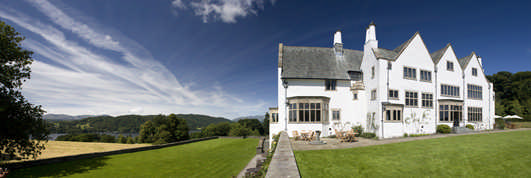
photograph © Tony West
Blackwell – The Arts and Crafts House
Windermere Steamboat Museum Building
Design: Carmody Groarke Architects
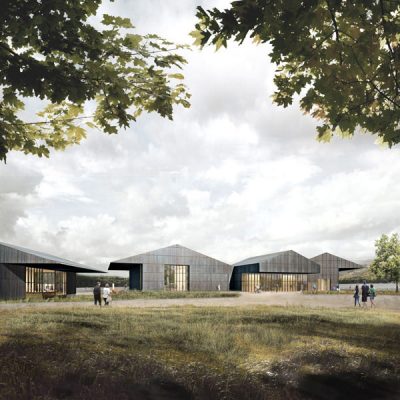
image © Carmody Groarke, from Lakeland Arts Trust
Windermere Steamboat Museum, Lake District
Grizedale Forest Resource Centre
Design: Sutherland Hussey Architects
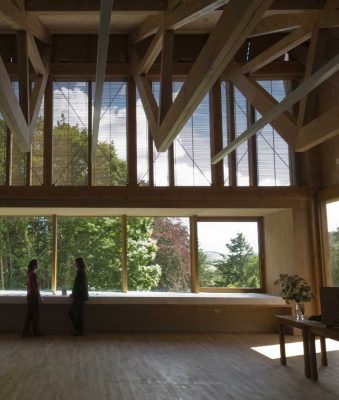
photo Courtesy Sutherland Hussey Architects
Grizedale Forest Lake District Building
Ullswater Yacht Club
Ullswater Yacht Clubhouse, Lake District
The Love Shack, Windermere
Design: Sutherland Hussey Architects
Windermere Building: Lake District House
English Architecture
English Architecture Design – chronological list
Comments / photos for the Dove Cottage, Museum at Wordsworth Grasmere Lake District Building page welcome

